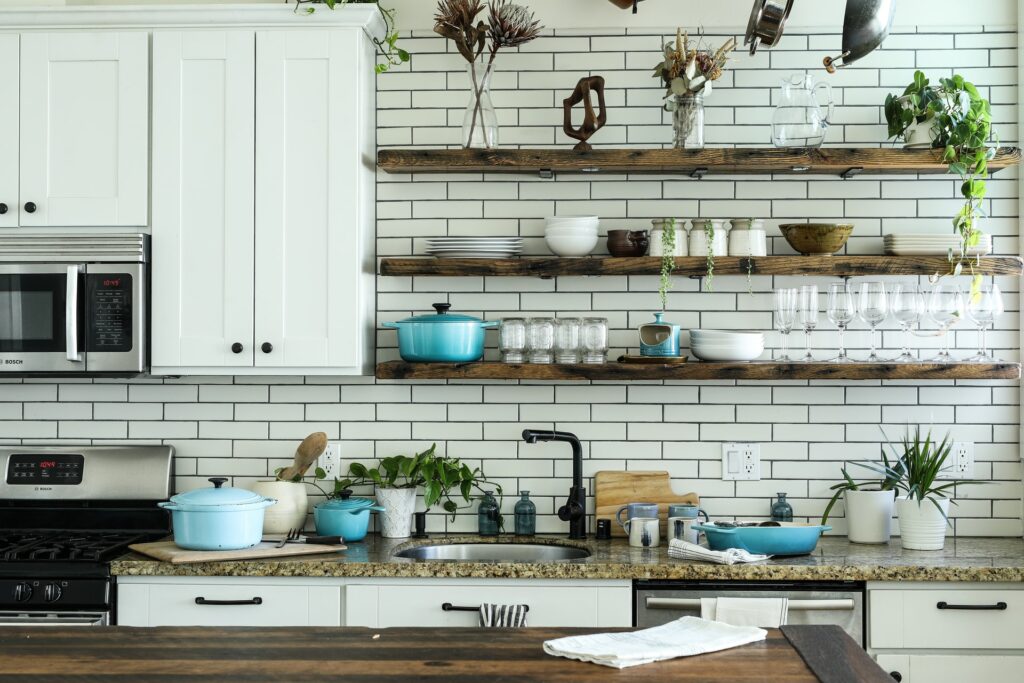In an era where global warming and the greenhouse effect are widely felt globally, it is time to take up responsibility and protect the planet. There are, undoubtedly, a thousand ways you can be part of taking care of the planet and remodelling your kitchen to a more eco-friendly design is one of them. While this may sound like an expensive endeavour, it is a brilliant idea that will prevent further pollution to the environment and save you money in the long run.
Choosing a green kitchen does not just mean using efficient, eco-friendly products. On the contrary, a redesigning project may require you to make serious decisions on the type of energy to use, the kind of wood for your cabinets, and the flooring options available for you. This article discusses the various way you can redesign your kitchen without harming the planet.
What To Consider Before Starting Your Redesigning Journey
Before starting remodelling your kitchen, it is crucial to have a clear idea of what you want the new kitchen to be like. There are important factors that you have to consider if you want to get the desired results and achieve your goal of having an eco-friendly kitchen.
Which Products and Materials Are Best to Build the New Kitchen.
Start by considering the items and materials you would like to use while planning your environmentally friendly kitchen renovation. Consider the materials’ natural, social, and economic effects across their entire life cycle, from manufacture to disposal. Try finding out the carbon footprint of your kitchen floor, for example. It’s important to remember the energy and resources used in its manufacturing and the product’s or material’s energy efficiency while in use.
How to Use Water and Power Most Efficiently.
Appliances with the highest energy and water efficiency scores can help you save money on energy and water. When it comes to waste in the kitchen, fridges and dishwashers are the biggest culprits, so replace these first. Consider different lighting choices when it comes to energy efficiency. LED bulbs are highly energy-efficient and are now much more affordable than they were previously. They’re supposed to last 10,000 hours longer than traditional incandescent bulbs, so they’re well worth the money. You can also add a splash of colour to brighten up your kitchen and set the tone.
How to Improve Quality of Air.
Renovations to your kitchen can introduce toxic chemicals into your home. The products you use would significantly affect the amount of potentially dangerous chemicals you bring in. When it comes to choosing paints and varnishes, it’s important to note that there are often safer and healthier options. Pay close attention to the paint and wood materials used in your kitchen cabinets. Never underestimate the importance of having a well-ventilated kitchen. There are several health benefits associated with kitchens built to maximize airflow, so when planning your swanky new green kitchen, always consider the location and size of your windows.
Steps to Remodel Your Kitchen.
Now that you have a clearer picture of what you want for your new kitchen, these are the steps you can take to make your dream a reality and wow guests at the next cookout.
Find An Expert.
If you are not experienced in doing renovations by yourself, the first step should be to get an expert. Working with a specialist who is familiar with the sustainable choices available to you is always preferable to making guesses along the way and hoping for the best. Get a contractor who knows the language and is knowledgeable about the environmentally friendly, non-toxic kitchen you want; it will save you both time and money!
Choose Sustainable Materials.

Choosing materials and putting together a paint scheme is perhaps the most enjoyable aspect of a kitchen remodel. However, before you make any final material choices, make sure you understand the environmental implications. There are plenty of sustainable materials available to fit any room and design, including countertops, FSC-certified cabinets, eco-friendly sinks and faucets, and recycled appliances. Additionally, you may consider using engineered wood for your floor. Engineered wood is extremely durable; it doesn’t expand and contract like regular wood, can be sanded down, is also cheap to install, and is indistinguishable from natural wood.
Choose Efficient Plumbing and Lighting Fixtures.
The bottom line is that energy conservation is now a top priority in our society. Look for the Energy Star icon on HVAC systems, appliances, and lighting fixtures to ensure they follow current EPA energy efficiency guidelines. You can change the wattage of lights by installing dimmer switches. You choose when it should be brighter and thus save some energy. When it’s time to replace your bulbs, try to use LED bulbs wherever possible. They are initially more costly, but they last longer, allowing you to recoup your investment through energy savings and less replacement. Upgrade your faucets to touch-free while you’re at it. Not only is it easy to use, but it also saves water by shutting off automatically. Make a major difference by going green with these minor changes.
Use Energy-Efficient Windows.
Everyone adores kitchens with big, beautiful windows that make a statement. If you need to install windows as part of your green kitchen remodel, select high-quality, energy-efficient windows that will help reduce heat transfer between your home and the outdoors. The most energy-efficient windows are those that have the ENERGY STAR sticker. Replacing old windows with ENERGY STAR approved windows reduces household energy bills by an average of 12% nationally, according to ENERGY STAR. Consider window films or honeycomb window coverings if you don’t have a huge budget for a replacement.
Conclusion
It is obvious that constructing a green and functional kitchen in your home does not require a large sum of money. Redesigning your new sustainable kitchen doesn’t have to be a difficult task; simply follow an eco-friendly plan for a stunning renovation that will bring you, your family, and your friends years of joy.

Author Bio: This article was written by Martin O’Callaghan of Wood Flooring Ireland. Martin specializes in designing sustainable wooden floors for kitchens.


